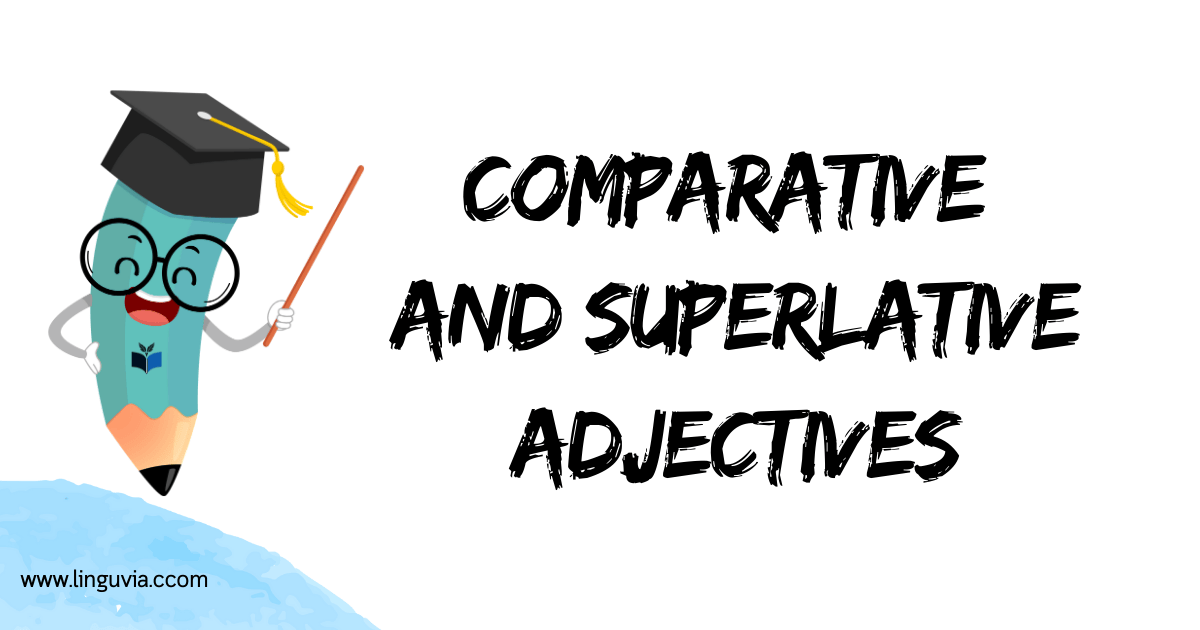This building is tall. That building is taller. But the Empire State Building is the tallest.
English adjectives transform to show different degrees of a quality, allowing us to compare things directly. These transformed forms—comparative and superlative adjectives—are essential tools for expressing differences and extremes.
Basic, Comparative, and Superlative Forms
Adjectives have three main forms that allow us to describe qualities at different levels of intensity.
Adjectives in English have three forms:
1. Basic form (positive): Describes a quality without comparison
- The water is cold.
- That was a good movie.
2. Comparative form: Compares two things
- The water today is colder than yesterday.
- This movie is better than the last one.
3. Superlative form: Identifies the extreme in a group of three or more
- This is the coldest water I've ever felt.
- That was the best movie in the series.
Formation Rules for Regular Adjectives
The length and ending of the basic adjective determine how we form its comparative and superlative versions.
One-Syllable Adjectives
Short adjectives follow a simple pattern of adding suffixes.
For most one-syllable adjectives, add "-er" for comparative and "-est" for superlative:
- tall → taller → the tallest
- bright → brighter → the brightest
- quick → quicker → the quickest
Two-Syllable Adjectives
Some two-syllable adjectives can follow either pattern depending on their sound and structure.
For adjectives ending in -y
Change the y to i and add "-er" or "-est":
- happy → happier → the happiest
- silly → sillier → the silliest
- pretty → prettier → the prettiest
For most other two-syllable adjectives
Use "more" and "most":
- careful → more careful → the most careful
- famous → more famous → the most famous
Some two-syllable adjectives can use either form:
- clever → cleverer/more clever → the cleverest/most clever
- quiet → quieter/more quiet → the quietest/most quiet
Three or More Syllable Adjectives
Longer adjectives always use the analytical form with more/most.
For adjectives with three or more syllables, always use "more" and "most":
- beautiful → more beautiful → the most beautiful
- expensive → more expensive → the most expensive
- interesting → more interesting → the most interesting
Irregular Comparative and Superlative Forms
Some of the most common adjectives don't follow the standard rules and must be memorized.
Some adjectives have completely irregular forms:
| Basic | Comparative | Superlative |
|---|---|---|
| good | better | best |
| bad | worse | worst |
| far | farther/further | farthest/furthest |
| little | less | least |
| many/much | more | most |
Examples:
- His performance was good, but hers was better. Mine was the best of all.
- Today's weather is bad, tomorrow will be worse, but Sunday will be the worst.
Spelling Rules to Remember
Special spelling adjustments occur with certain word endings.
When forming comparatives and superlatives, watch for these spelling patterns:
Spelling Rule 1
For adjectives ending in a single consonant preceded by a single vowel, double the final consonant:
- big → bigger → the biggest
- hot → hotter → the hottest
Spelling Rule 2
For adjectives ending in -e, just add -r or -st:
- nice → nicer → the nicest
- large → larger → the largest
Spelling Rule 3
For adjectives ending in consonant + y, change y to i before adding -er or -est:
- happy → happier → the happiest
- heavy → heavier → the heaviest
Equal, Comparative, and Superlative Structures
Different grammatical structures express different types of comparison.
Equal Comparison
Used to show that things have the same degree of a quality.
Structure: "as + adjective + as"
Examples:
- My car is as fast as yours.
- This test was as difficult as the previous one.
Comparative Structures
Used to show differences between two things.
Structure: "comparative adjective + than"
Examples:
- Elephants are larger than tigers.
- This book is more interesting than the one I read last week.
Superlative Structures
Used to show that something has the highest or lowest degree of a quality in its group.
Structure: "the + superlative adjective + (in/of phrase)"
Examples:
- Mount Everest is the highest mountain in the world.
- She is the most talented pianist of all the students.
Common Errors and Special Cases
Several tricky situations require special attention.
Double Comparatives and Superlatives
A common error is using both forms simultaneously.
- Incorrect: This is more better than that one.
- Correct: This is better than that one.
- Incorrect: She is the most prettiest girl.
- Correct: She is the prettiest girl.
Absolute Adjectives
Some adjectives logically cannot be compared because they represent absolute states.
Certain adjectives describe qualities that cannot technically have degrees:
- perfect
- unique
- complete
- impossible
- dead
However, in casual speech, people often use these in comparative forms to indicate degrees of closeness to the absolute state:
- This solution is more perfect than the last one.
- That's the most unique approach I've seen.
Less and Least
The comparative and superlative forms can also express lower degrees.
For describing lower degrees of qualities:
- Use "less" for comparative: This shirt is less expensive than that one.
- Use "least" for superlative: This is the least difficult problem on the test.


